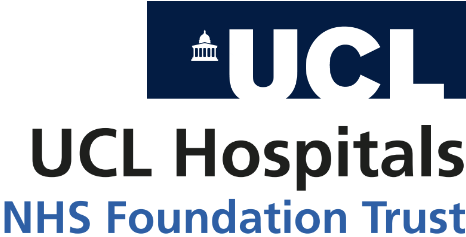
Virus Watch preliminary findings on 31 July 2023
You can find our most recent results at findings so far.
Virus Watch is a research study run by University College London and the NHS. The study aims to identify how COVID-19 spreads, and how to stop it. Findings so far presented on this page are early, preliminary results and should be interpreted with caution as they have not all yet been peer-reviewed by scientists external to our research collaborators. We are presenting these early findings for participants, the general public and policy makers. A detailed description of the Virus Watch study and our research questions can be found in our study protocol. Virus Watch began recruiting people in June 2020 and since then, 58,628 people in 28,527 households across England and Wales have joined the study. You can find a detailed description of the cohort in a profile of the study here.
Table of contents
- Summary of findings
- The incidence of COVID-19-related hospitalisation in migrants
- The role of household overcrowding in risk of SARS-CoV-2 infections in migrants
1. Summary of findings:
The incidence of COVID-19-related hospitalisation in migrants:
- Migrants in the UK may be at higher risk of SARS-CoV-2 exposure; however, little is known about their risk of COVID-19-related hospitalisation.
- We analysed hospital data for adults taking part in Virus Watch and estimated COVID-19-related hospitalisation incidence rates for migrants.
- We found a 35% increased rate of COVID-19-related hospitalisation in migrants compared to UK-born individuals.
- Our findings suggest migration populations in the UK have excess risk of COVID-19-related hospitalisations and underscore the need for more equitable interventions particularly aimed at COVID-19 vaccination uptake among migrants.
The role of household overcrowding in risk of SARS-CoV-2 infections in migrants:
- We have previously shown how household overcrowding is a risk factor for SARS-CoV-2 infection.
- Migrants are more likely to live in overcrowded households than UK-born individuals.
- We aimed to estimate how the increased risk of living in overcrowded housing increased migrants’ risk of SARS-CoV-2 infection.
- Migrants had 22% higher odds of infection during the second wave and household overcrowding accounted for approximately 36% of these increased odds.
- Policy interventions to reduce household overcrowding for migrants are needed as part of efforts to tackle health inequalities during the pandemic and beyond.
You can find our previous findings on the links below.
- Preliminary findings November 2020
- Preliminary findings January 2021
- Preliminary findings March 2021
- Preliminary findings May 2021
- Preliminary findings June 2021
- Preliminary findings December 2021
- Preliminary findings February 2022
- Preliminary findings December 2022
You can also find a list of our publications here.
2. The incidence of COVID-19-related hospitalisation in migrants
The COVID-19 pandemic highlighted and amplified existing health disparities among underserved populations in the UK. Migrants (people not born in the UK) often experience socio-economic and structural inequalities that could contribute to an increased risk of severe acute respiratory syndrome coronavirus 2 (SARS-CoV-2) infection, and adverse COVID-19 outcomes.
In this analysis we used data from the Virus Watch cohort study linked to NHS hospital data to estimate the incidence of COVID-19-related hospitalisation across the first three COVID-19 infection waves in migrants in England compared to UK-born individuals.
Across the three waves, there were 148 COVID-19-related hospitalisations. The overall estimated incidence rate of COVID-19-related hospitalisations was 3.0 per 1,000 person-years [95% CI 2.5-3.5]. When stratified by migration status, the incidence rates were 2.7 [2.2-3.2] and 4.6 [3.1-6.7] per 1,000 person-years in UK-born and migrant individuals, respectively.
Pooled incidence rate ratio (IRR) suggested a 1.68 [1.08-2.60] increased rate of COVID-19-related hospitalisation in migrants compared to UK-born individuals (Figure 1). After adjusting for age, sex and ethnic minority status, COVID-19-related hospitalisation rate was higher in migrants than UK-born participants (pooled adjusted IRR: 1.35 [0.71-2.60]).
Figure 1. Association between migrant status and COVID-19-related hospitalisation in England – unadjusted and adjusted pooled incidence rate ratios (IRR).
Our findings suggest the need for better prevention of SARS-CoV-2 infection and early access to healthcare for migrants who are infected. Preventative efforts should focus on increasing vaccination uptake in order to protect migrants from COVID-19-related hospitalisation.
Good practices seen during the pandemic include providing free access to the COVID-19 vaccine to everyone, regardless of immigration status, NHS number or identity document, and setting up innovative vaccination access points in convenient areas with free extended hours. In addition, policymakers should fund the collaboration between local councils and trusted community partners to engage and build trust with migrant communities.
Continued efforts should be made to reduce occupational risk of COVID-19 for migrants to prevent infection. To reduce the risk of hospitalisation amongst those who are infected, further efforts should ensure that barriers to accessing care are removed, including access to primary care, and culturally and linguistically appropriate services.
3. The role of household overcrowding in risk of SARS-CoV-2 infections in migrants
Migrants in England and Wales may be at greater risk of exposure to SARS-CoV-2 due to unique risk factors, including over-representation in front-line jobs, an increased likelihood of living in multigenerational households and difficulties in accessing primary care.
Research shows that migrants in high-income countries have been disproportionately infected with SARS-CoV-2. It is likely that, due to their pre-existing vulnerabilities, this is similarly the case for migrants in England and Wales; however, quantitative evidence addressing this is lacking.
We investigated the effect of being a migrant on SARS-CoV-2 infection during the second wave of the pandemic in a cohort in England and Wales. We also determined the proportion of the effect mediated by household overcrowding after controlling for age, sex, ethnicity, clinical vulnerability, occupation, income and the presence of children in the household.
We estimated that migrants had 22% higher odds of being infected with SARS-CoV-2 than their UK-born counterparts, and household overcrowding accounted for approximately 36% of these increased odds.
The disproportionate effect of household overcrowding on individuals in the migrant group compared with UK-born individuals builds on previous Virus Watch results showing household overcrowding as a risk factor for SARS-CoV-2 infection.
Household overcrowding has become more common over recent years, particularly in the private and social rental sectors. Migrants are more likely to privately rent their homes and have lower rates of homeownership than non-migrants, which may explain the differential impact on this group.
Findings from our analyses demonstrate the health implications of existing housing inequalities. They highlight the importance of addressing overcrowding as part of a public health strategy to reduce health inequalities, and to ensure the UK’s preparedness for any subsequent waves or future pandemics. Future research is required to examine other reasons that cause the increased risk of infection for migrants in order to better inform policy interventions across the wider determinants of health.
